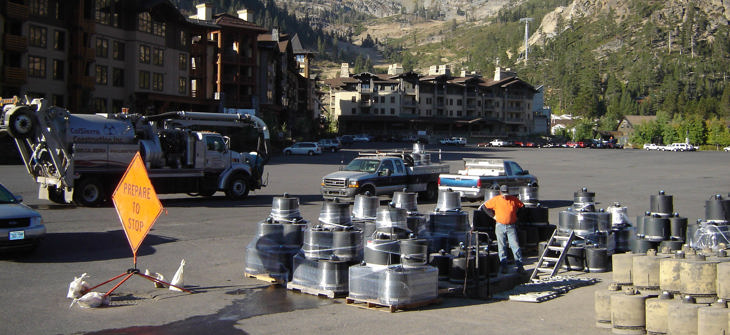
Maintenance Considerations for Media Based Stormwater Filtration Systems
How to Maintain Media-Based Filtration Systems for Optimal Stormwater Performance
Many manufactured stormwater filtration systems use media-filled cartridges. During a storm, runoff passes through the filtration media, which absorbs and retains pollutants from stormwater runoff, including total suspended solids, hydrocarbons, nutrients, metals and other common pollutants. The structures that house the filter cartridges can be constructed in various ways to accommodate a wide range of flows, project footprints and variable hydraulic conditions. Standard configurations include catch basin, manhole, vault, curb inlet and systems with internal peak flow conveyance.
Annual inspection of media-based filter systems is typical, with additional inspections generally recommended after major storm events. Inspection procedures differ by manufacturer, but visual indicators are used to evaluate the need for maintenance in most cases. Factors such as the amount of accumulated sediment, sediment loading on top of the cartridge, submerged cartridges, a pronounced scum line, or plugged media may indicate the need for maintenance.
Maintenance of media-based filter systems includes removing accumulated sediment, spraying down the interior of the structure, and replacing the media cartridges. Depending on the size and location of the unit, maintenance can take anywhere from just a few minutes, as is the case with a single cartridge catch basin, to several hours to complete. Maintenance personnel may be required to enter the structure to perform the maintenance, and a vacuum truck is typically used to remove sediment.
The process for removing the spent media cartridges differs considerably by manufacturer, and these differences can have a significant impact on the time needed for cartridge replacement. The more time needed on-site, the higher the maintenance costs. When evaluating media-based filter systems, engineers should inquire as to the following to ensure long-term maintenance costs are reduced:
1. Are the cartridges designed with features to prevent debris and oil from clogging the media surface (i.e. hood, skirt)? Do the cartridges have a surface-cleaning mechanism?
- These features can extend filter cartridge life and maintenance intervals.
2. How long is the targeted media replacement maintenance interval? Is there operational data available to support the recommended maintenance interval?
- Filter cartridge replacement intervals differ considerably between manufacturers, ranging from more than once per year to up to 5 years between maintenance events.
3. Does the manufacturer offer a cartridge exchange program?
- Production and lead time for replacement cartridges vary and can be as long as four weeks.
- Are the replacement cartridges recycled to reduce the use and disposal of plastic components?
4. How much do replacement cartridges cost?
- There can be a significant cost difference for replacement cartridges from different manufacturers.
5. Are tools needed to remove the media cartridges? How fast can the cartridges be removed?
- Cartridge handling and/or assembly can add costly labor at the beginning and end of the maintenance event.
